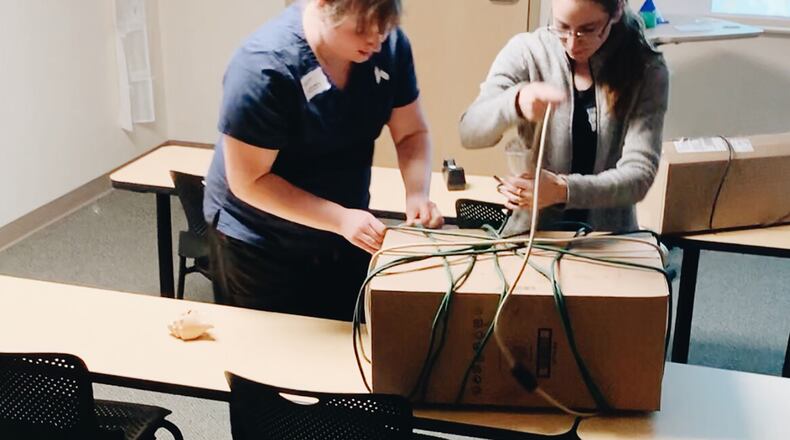Taryn Talbott is an associate professor and the advanced imaging clinical coordinator in Kettering College’s Radiologic Science and Imaging Department. She is always looking for unique ways to engage her students in interactive learning experiences. So, when she sat down to plan the final review for a theory and clinical course in computed tomography, she tried something new: an escape room that incorporated concepts from physics, pathology and anatomy.
“Today’s students learn differently,” Talbott said. “This is a generation that has grown up with technology in their hands, so they don’t learn by regurgitating memorized facts on paper; they learn by reflecting on experiences. An escape room is a perfect way to bring learning to life.”
For the final review Talbott transformed a classroom into an escape room, complete with a countdown clock, messages written in invisible ink, clues in locked boxes and a “laser maze” made from rope. In teams of two, the students had to draw from course lessons to complete the puzzles and determine the best way to care for a patient. Just as in a real escape room — or a busy hospital — they had to work together under time constraints.
The goal of Talbott’s escape room was to place students in an unfamiliar environment and challenge them to apply what they learned in a simulated “real-world” setting.
“It’s important for students to be able to think critically and adapt to whatever situation they’re thrown into, especially when it comes to the healthcare field,” she explained. “Watching the students’ faces light up as they successfully solved the problems was priceless.”
Talbott’s students had an overwhelmingly positive response to the escape room.
“Not only was the escape room educational, but it also allowed for some fun,” said Erica Cavender, who is earning a bachelor’s degree in advanced imaging. “It was a great bonding experience and provided a way to put our skills to the test other than the standard pencil and paper or an online format of testing.”
Talbott said the students walked away from the experience feeling encouraged and more confident in their ability to think quickly and clearly on their feet. She’s planning to incorporate the escape room concept into the course curriculum and develop a virtual model for students taking the course online.
“Kettering College has some of the most amazing students, and that’s what makes my job so rewarding,” Talbott said. “They are wonderful in the classroom and the hospital. They are eager to learn, reflect and adapt, and that means they will be prepared to offer great patient care.”
About the Author
